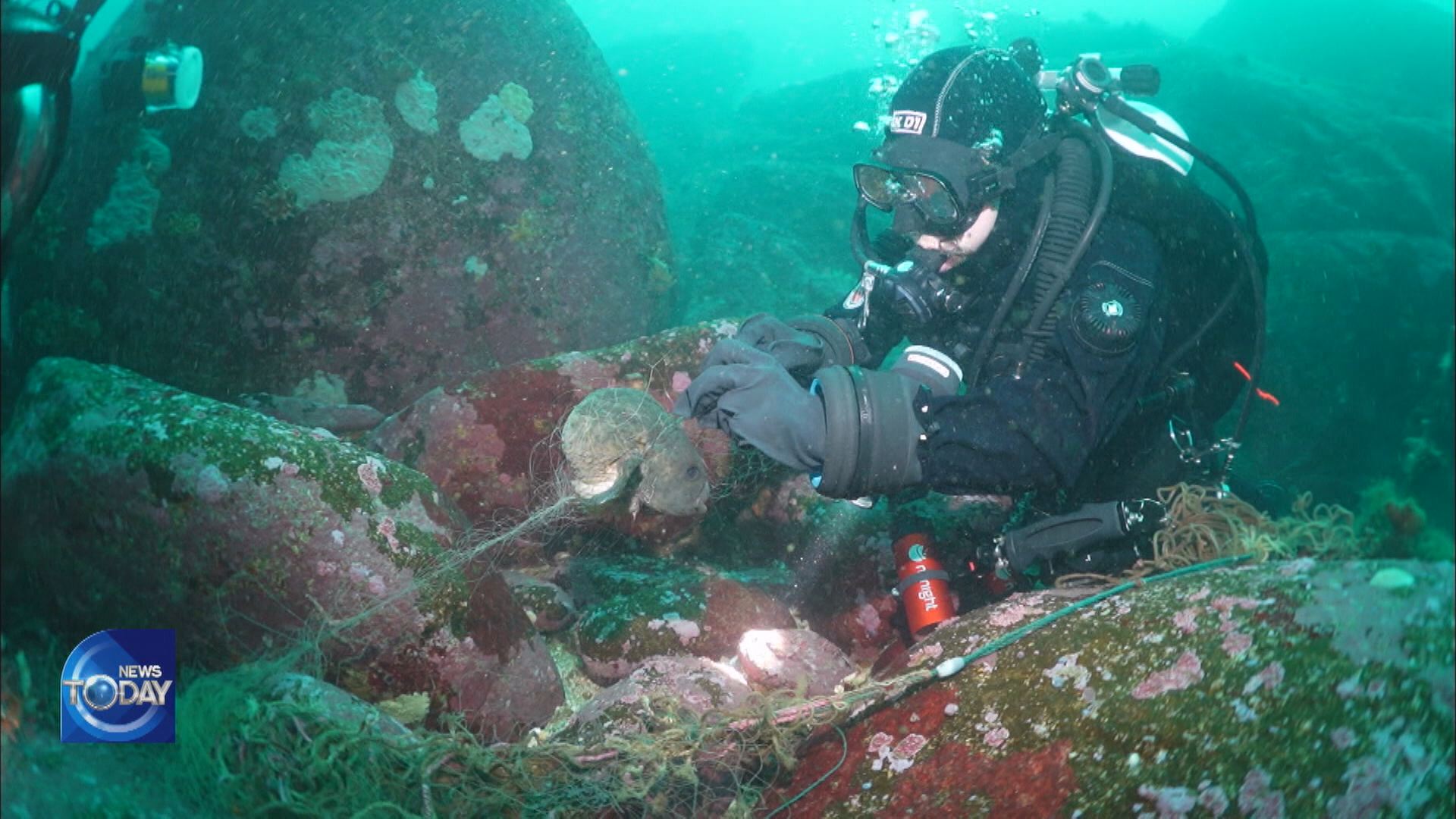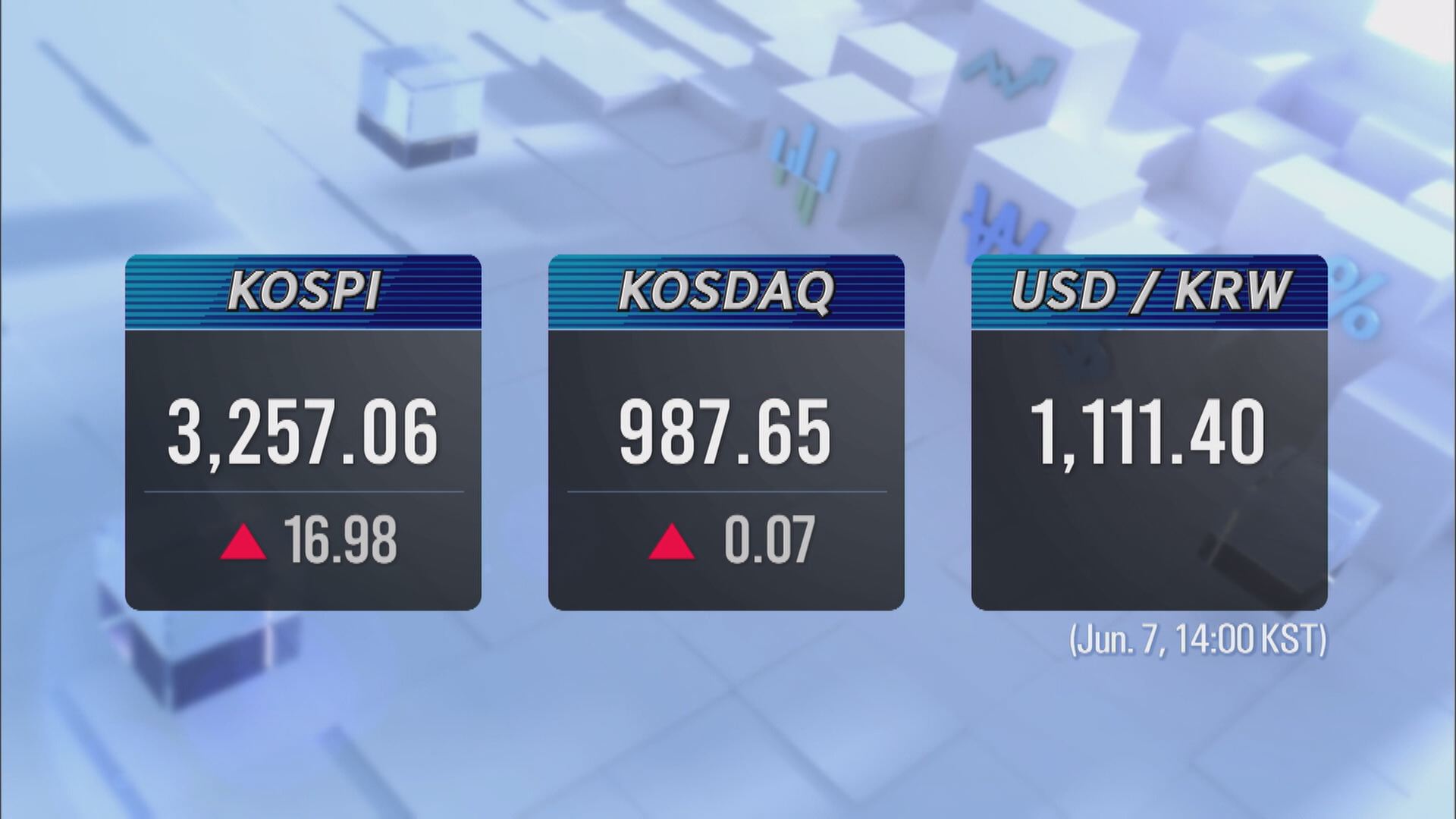FISHING TOOLS CONTINUE TO POSE THREATS
입력 2021.06.07 (16:07)
수정 2021.06.07 (16:53)
읽어주기 기능은 크롬기반의
브라우저에서만 사용하실 수 있습니다.
[Anchor Lead]
About 70 percent of plastic waste in the ocean are discarded fishing tools. More than 40-thousand tons of fishing tools are thrown away in waters off Korea every year. Plastic waste causes serious damage to the marine environment and poses threat to the marine ecosystem with scores of fish dying in discarded fishing nets.
[Pkg]
A Pacific spiny lumpsucker tries desperately to escape from a fishing net. The more it wiggles, the more it gets entangled in the strangling net. When a diver carefully removes the net, the fish finally swims away. When a large hole is made in a discarded fish trap, an octopus rushes out. The corpses of fish that have been dead for a while are scattered around the ocean floor.
[Soundbite] Lee Hye-eun(Marine life rescue diver) : "Fish enter the fishing nets thinking there is prey inside. Other fish follow them and end up being trapped inside."
A coral reef is completely covered in a large fishing net. Discarded fishing tools, rain boots and tires are scattered all over. They were thrown away by fishermen or were washed away by typhoons. Some 67,000 tons of plastic waste are found in the sea every year. About 70 percent, or 47,000 tons, are discarded fishing equipment. Fish accounting for 10 percent of the annual catch die in discarded fishing tools. What's more, they produce microplastics, polluting the marine ecosystem and causing maritime accidents by permeating ship engines. Discarded fishing tools are collected every year, but only a quarter of them are removed from the sea.
[Soundbite] Choi Sung-yong(Ministry of Oceans and Fisheries) : "If marine waste was found in one place, we would just dispatch equipment and personnel there. But it keeps floating around in water and spreads to other areas."
To prevent such waste, the government is pushing for regulations requiring real name checks and deposits for using fishing equipment.
About 70 percent of plastic waste in the ocean are discarded fishing tools. More than 40-thousand tons of fishing tools are thrown away in waters off Korea every year. Plastic waste causes serious damage to the marine environment and poses threat to the marine ecosystem with scores of fish dying in discarded fishing nets.
[Pkg]
A Pacific spiny lumpsucker tries desperately to escape from a fishing net. The more it wiggles, the more it gets entangled in the strangling net. When a diver carefully removes the net, the fish finally swims away. When a large hole is made in a discarded fish trap, an octopus rushes out. The corpses of fish that have been dead for a while are scattered around the ocean floor.
[Soundbite] Lee Hye-eun(Marine life rescue diver) : "Fish enter the fishing nets thinking there is prey inside. Other fish follow them and end up being trapped inside."
A coral reef is completely covered in a large fishing net. Discarded fishing tools, rain boots and tires are scattered all over. They were thrown away by fishermen or were washed away by typhoons. Some 67,000 tons of plastic waste are found in the sea every year. About 70 percent, or 47,000 tons, are discarded fishing equipment. Fish accounting for 10 percent of the annual catch die in discarded fishing tools. What's more, they produce microplastics, polluting the marine ecosystem and causing maritime accidents by permeating ship engines. Discarded fishing tools are collected every year, but only a quarter of them are removed from the sea.
[Soundbite] Choi Sung-yong(Ministry of Oceans and Fisheries) : "If marine waste was found in one place, we would just dispatch equipment and personnel there. But it keeps floating around in water and spreads to other areas."
To prevent such waste, the government is pushing for regulations requiring real name checks and deposits for using fishing equipment.
■ 제보하기
▷ 카카오톡 : 'KBS제보' 검색, 채널 추가
▷ 전화 : 02-781-1234, 4444
▷ 이메일 : kbs1234@kbs.co.kr
▷ 유튜브, 네이버, 카카오에서도 KBS뉴스를 구독해주세요!
- FISHING TOOLS CONTINUE TO POSE THREATS
-
- 입력 2021-06-07 16:07:41
- 수정2021-06-07 16:53:46

[Anchor Lead]
About 70 percent of plastic waste in the ocean are discarded fishing tools. More than 40-thousand tons of fishing tools are thrown away in waters off Korea every year. Plastic waste causes serious damage to the marine environment and poses threat to the marine ecosystem with scores of fish dying in discarded fishing nets.
[Pkg]
A Pacific spiny lumpsucker tries desperately to escape from a fishing net. The more it wiggles, the more it gets entangled in the strangling net. When a diver carefully removes the net, the fish finally swims away. When a large hole is made in a discarded fish trap, an octopus rushes out. The corpses of fish that have been dead for a while are scattered around the ocean floor.
[Soundbite] Lee Hye-eun(Marine life rescue diver) : "Fish enter the fishing nets thinking there is prey inside. Other fish follow them and end up being trapped inside."
A coral reef is completely covered in a large fishing net. Discarded fishing tools, rain boots and tires are scattered all over. They were thrown away by fishermen or were washed away by typhoons. Some 67,000 tons of plastic waste are found in the sea every year. About 70 percent, or 47,000 tons, are discarded fishing equipment. Fish accounting for 10 percent of the annual catch die in discarded fishing tools. What's more, they produce microplastics, polluting the marine ecosystem and causing maritime accidents by permeating ship engines. Discarded fishing tools are collected every year, but only a quarter of them are removed from the sea.
[Soundbite] Choi Sung-yong(Ministry of Oceans and Fisheries) : "If marine waste was found in one place, we would just dispatch equipment and personnel there. But it keeps floating around in water and spreads to other areas."
To prevent such waste, the government is pushing for regulations requiring real name checks and deposits for using fishing equipment.
About 70 percent of plastic waste in the ocean are discarded fishing tools. More than 40-thousand tons of fishing tools are thrown away in waters off Korea every year. Plastic waste causes serious damage to the marine environment and poses threat to the marine ecosystem with scores of fish dying in discarded fishing nets.
[Pkg]
A Pacific spiny lumpsucker tries desperately to escape from a fishing net. The more it wiggles, the more it gets entangled in the strangling net. When a diver carefully removes the net, the fish finally swims away. When a large hole is made in a discarded fish trap, an octopus rushes out. The corpses of fish that have been dead for a while are scattered around the ocean floor.
[Soundbite] Lee Hye-eun(Marine life rescue diver) : "Fish enter the fishing nets thinking there is prey inside. Other fish follow them and end up being trapped inside."
A coral reef is completely covered in a large fishing net. Discarded fishing tools, rain boots and tires are scattered all over. They were thrown away by fishermen or were washed away by typhoons. Some 67,000 tons of plastic waste are found in the sea every year. About 70 percent, or 47,000 tons, are discarded fishing equipment. Fish accounting for 10 percent of the annual catch die in discarded fishing tools. What's more, they produce microplastics, polluting the marine ecosystem and causing maritime accidents by permeating ship engines. Discarded fishing tools are collected every year, but only a quarter of them are removed from the sea.
[Soundbite] Choi Sung-yong(Ministry of Oceans and Fisheries) : "If marine waste was found in one place, we would just dispatch equipment and personnel there. But it keeps floating around in water and spreads to other areas."
To prevent such waste, the government is pushing for regulations requiring real name checks and deposits for using fishing equipment.
이 기사가 좋으셨다면
-
좋아요
0
-
응원해요
0
-
후속 원해요
0

















이 기사에 대한 의견을 남겨주세요.